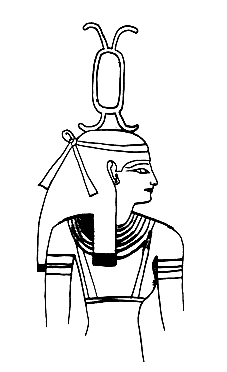
Goddess whose most important cult area was in Sais in the Delta. She was worshipped from an early period, as is demonstrated by her emblem (a shield and two crossed arrows) appearing on stelae from the 1st Dynasty, and by her name appearing as an element in royal names from that period. Her significance gradually decreased throughout the Old Kingdom, however, and it was not until the 26th Dynasty that Neith again played an important role. Neith was originally a goddess of hunting or warfare; this is shown not only by her emblem but also her links with the god Wepwawet, who also had a cult in Sais. The duty of both gods was to 'open' the ways for the king in order to ensure him success in battle. As a result of this function, Neith acquired the role of protective goddess. Thus she also became linked with certain burial rituals. She appears in the Pyramid Texts of the Old Kingdom, usually with Selkis, Isis and Nephthys. As the goddess who invented weaving, she was associated in particular with the mummy bandages in whose protective coils the deceased was wrapped. Neith was also the protectress of one of the Four Sons of Horus, Duamutef, the god who watched over the stomach of the deceased. From the Old Kingdom on, Neith was regarded as the partner of Seth and the mother of Sobek, the crocodile god. As a mother goddess she was linked with the sky and with other goddesses associated with it, Nut and Hathor. Her link with water, regarded by the Egyptians as the primeval waters, also played a role in this; Neith was equated with the goddess Mehetweret ('the great flood') and took over the form of a cow from her, a form assumed by other sky goddesses. Together with Khnum, Neith played the part of a creator god in the temple of Esna (Graeco-Roman Period). This god was regarded as the father and mother of everything, and some texts therefore turn the two deities into one androgynous god. Neith at this time was regarded as a goddess originally from Upper Egypt, who had settled in the Delta at a later period. Neith is usually depicted as a woman wearing the red crown of Lower Egypt.